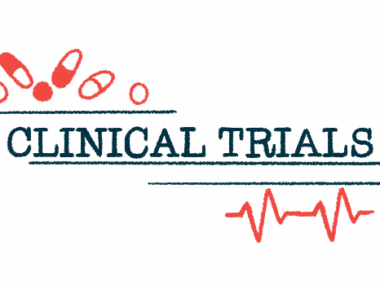Carvykti lowering risk of death as second-line myeloma therapy: Trial
Findings in patients nearly three years after single infusion of CAR T-cell therapy
Written by |

A single infusion of the cell therapy Carvykti (ciltacabtagene autoleucel) reduced the risk of death by 45% relative to standard treatment regimens for multiple myeloma patients resistant to Revlimid (lenalidomide) and with at least one prior therapy line, according to analyses of a Phase 3 clinical trial.
Findings from a nearly three-year follow-up of people in the CARTITUDE-4 clinical trial (NCT04181827) were given as an oral presentation at the recent 2024 International Myeloma Society Annual Meeting. The presentation was titled “Overall Survival (OS) With Ciltacabtagene Autoleucel (Cilta-cel) Versus Standard of Care (SoC) in Lenalidomide (Len)-Refractory Multiple Myeloma (MM): Phase 3 CARTITUDE-4 Study Update.”
“CARVYKTI is the first and only cell therapy approved for … patients with myeloma as early as second line, and now also the first and only cell therapy to improve overall survival and demonstrate improved patient quality-of-life outcomes versus standard therapies for patients with [Revlimid-resistant] multiple myeloma,” Jordan Schecter, MD, vice president and disease area leader for multiple myeloma at Johnson & Johnson, said in a company press release. Johnson & Johnson is developing the therapy along with Legend Biotech.
Carvykti is an approved second-line therapy for patients refractory to Revlimid
In 2022, Carvykti initially was approved in the U.S. for adults with relapsed or refractory multiple myeloma who received four or more prior lines of treatment, including an immunomodulatory agent (iMiD), a proteasome inhibitor (PI), and a CD38 inhibitor.
Backed by earlier analyses from the CARTITUDE-4 trial, Carvykti’s U.S. label expanded this year to be a second-line therapy for patients with disease relapse after at least one prior treatment line, including a PI and iMiD, who fail to respond to Revlimid. Carvykti also is approved for this patient group in the European Union.
“The three-year follow-up data from the Phase 3 CARTITUDE-4 study show a statistically significant and clinically meaningful improvement in overall survival and quality-of-life measures with Carvykti versus standard therapies — meaningful results that have the potential to transform the multiple myeloma treatment landscape,” said Binod Dhakal, MD, a trial investigator and an associate professor at the Medical College of Wisconsin.
“This adds to the growing body of data reinforcing the promise of a single infusion of Carvykti,” Dhakal added.
Carvykti belongs to a class of treatments called CAR T-cell therapies, which work to boost the cancer-fighting abilities of immune T-cells. With the approach, T-cells are collected from a patient and modified in the lab to contain a chimeric antigen receptor, or CAR, that recognizes a protein called BCMA found on the surface of myeloma cells.
The modified cells are infused back to the patient, equipped to specifically target and kill cancer cells.
CARTITUDE-4 enrolled 419 adults with Revlimid-resistant myeloma who had received at least one prior line of treatment, including a PI and an IMiD. Participants were randomly assigned to either Carvykti or one of two standard combination treatment regimens: Pomalyst (pomalidomide), Velcade (bortezomib), and dexamethasone, or Darzalex (daratumumab), Pomalyst, and dexamethasone.
Previous trial data, collected around 1.5 years after a single infusion, showed that Carvykti was associated with a 59% reduction in the risk of disease progression or death relative to the other regimens.
77% of Carvykti-treated patients showed a complete response to therapy
Data now at nearly three years (34 months) after treatment found that median overall survival could not be calculated for either group, meaning that most patients were alive, limiting such a calculation.
Still, overall survival rates at 2.5 years of follow-up (30 months) were 76% for Carvykti-treated patients and 64% for the standard therapy group, reflecting a significant, 45% lower risk of death with Carvykti.
Median progression-free survival, or the time without signs of disease progression, was a little less than one year in the standard regimen group, and had not been reached in the Carvykti group.
The overall treatment response rate, referring to patients who had at least a partial response to the therapy, was 85% among those receiving Carvykti, with 77% demonstrating a complete response or better, meaning there were no detectable signs of myeloma.
Among Carvykti-treated patients, 62% reached minimal residual disease negativity, compared with 18.5% of those on standard treatment. Minimal residual disease refers to the small amount of myeloma cells that can remain after treatment and cause a relapse, while adding negativity means such cells could not be detected.
In the standard therapy group, the median duration of clinical response was about 1.5 years, and median time to symptom worsening was nearly three years. With Carvykti, the median time to either outcome had not yet been reached, meaning most patients in this group still were responding to the therapy and without symptom worsening.
Carvykti’s safety profile was consistent with earlier analyses, with the most common severe or life-threatening adverse event being low blood cell counts.
In the Carvykti group, 50 people died, 21 of them (42%) due to progressive disease. In the standard care group, 82 people died, 51 (62.2%) due to progressive disease.
“These long-term results are groundbreaking and demonstrate that Carvykti significantly extends patients’ overall survival and meaningly improves their quality of life,” Maria-Victoria Mateos, MD, PhD, a consultant physician associate professor at the University of Salamanca, in Spain, said in a Legend Biotech press release. “These data show that with a single infusion, we can reduce the risk of death and offer multiple myeloma patients the opportunity to live longer.”







